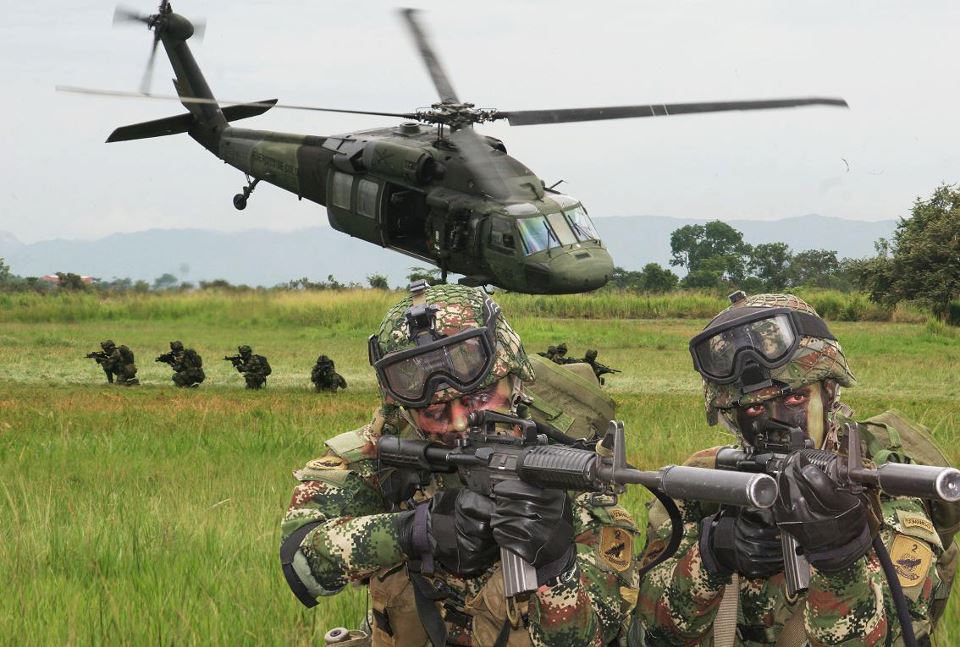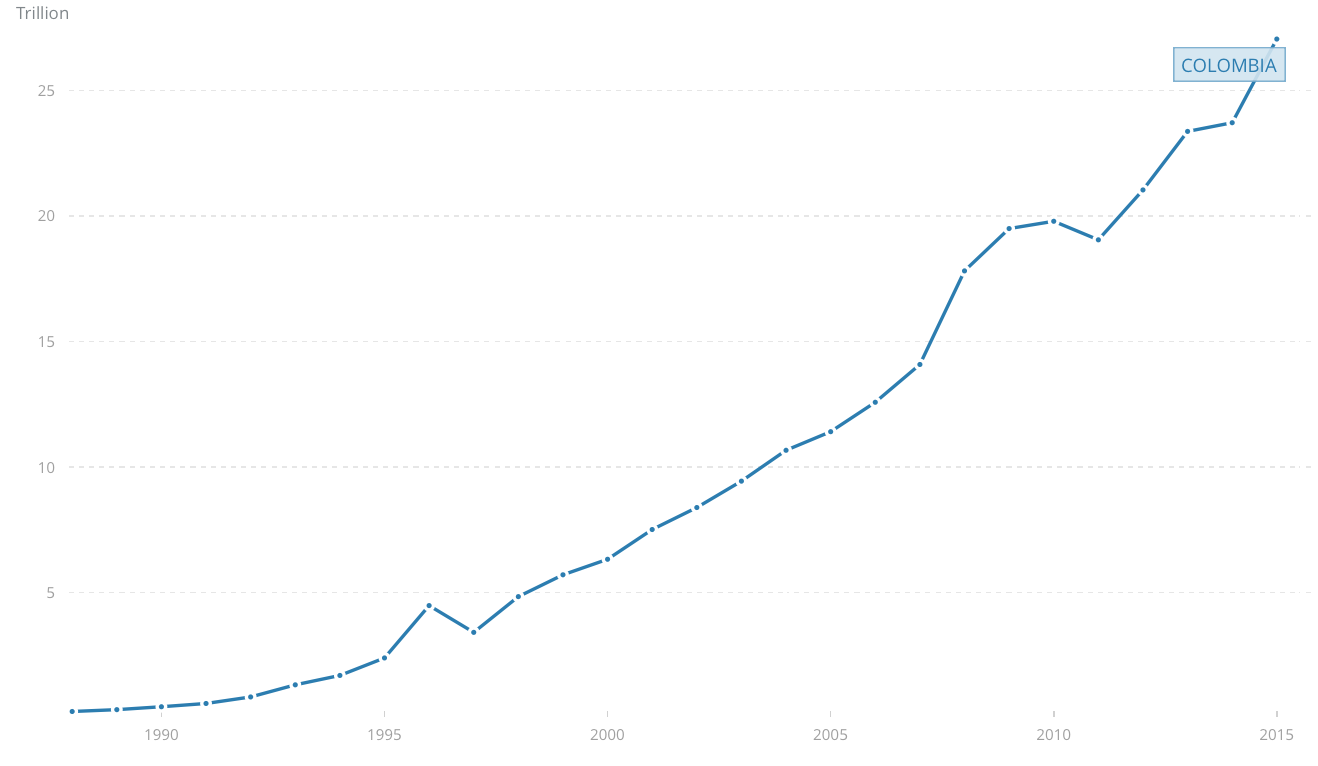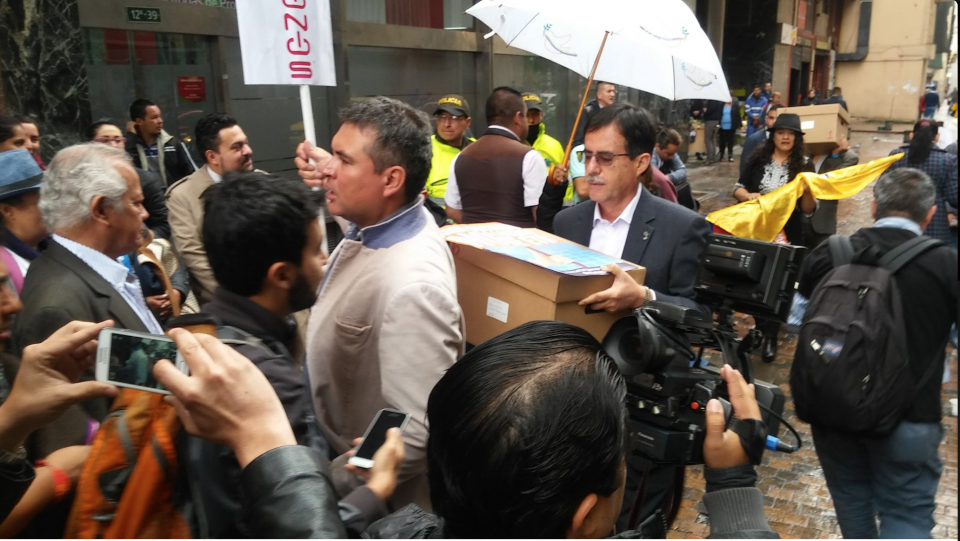
The Colombian military is now the second largest in the Americas, second only to the USA.
One of the consequences of years of violence is that Colombia has spent decades investing in its military capacity. Marian Romero finds out more about the considerable market potential of the country’s defence industry.
Colombia has invested over USD$82 million in the defence industry over the past 15 years, according to figures from the World Bank. To put this number in context, that is roughly equivalent to the amount the United States spent on the Persian Gulf War.
Last year, the country spent 3.4% of its GDP on defence – the highest percentage of any country in the region. And it’s not only about money, it’s about people too. Between 2002 and 2015, Colombian security forces grew by 45%, making them the second largest force in the Americas, after the United States.
Much of this investment has been directed at the development of infrastructure. Colombia is self-sufficient in several areas of production such as maintenance and logistics for ships, aircraft and other military assets.

Military spending per year in Colombia 1998 – 2015, topping out at over USD$27billion in 2015. Source: World Bank
According to the Ministry of Defence, between 2010 and 2014, Colombia’s homicide rate fell by 26%, 482 municipalities were declared free of homicides, 89% of municipalities were declared free of terrorist attacks in 2014 and 93% of municipalities were free of subversive actions.
This reduction in violence makes it an increasingly viable export market. During the past three years, the defence industry’s operating revenues have increased by an average of 7.25%, with exports of over USD $13 million between 2013 and 2015.
However, there is still a huge opportunity for local vendors, as the five defence industry companies are still net importers.
Colombia has five different state businesses in the industry, all of which are certified internationally. In 2015, their operational income was close to USD $500 million. These businesses are:
Cotecmar Naval: A shipyard with the capacity to repair 16 projects (dock and pier) to produce maritime interdiction vessels and amphibious landing ships.
CIAC: The aeronautical manufacturer which repairs and maintains aircraft for the Colombian Air Force as well as Airbus Defence and Space.
Codaltec: The high-tech corporation charged with appropriation and generation of knowledge, as well as developing technology for the public and private sector.
Indumil: In charge of import, manufacture and sale of weapons and ammunition for public and private sector.
Armed Forces Logistics Agency: Provides solutions focused on supply and infrastructure for the Colombian Armed Forces and other state entities.
Whatever happens next in the peace process, Air Force General and Deputy Minister of Defence José Javier Pérez says that the industrial muscle that Colombia has developed will still be extremely important.
Tackling drug trafficking and organised crime will remain a number one priority and, if a new peace deal can be signed, also opens up an important opportunity to build infrastructure and make full use of the industrial capabilities that Colombia has developed through its military.
In August, the DNP (National Planning Department) and the Ministry of Defence held an event called ‘A partnership for productive transformation’. Its purpose was to start a dialogue between the industrial defence sector and the private sector in order to establish partnerships aimed at strengthening the market.
Gabriel Cifuentes, DNP Director of Justice, Security and Government says that the idea of establishing coordinated tasks between the public and private defence sectors came out of an analysis of the macroeconomic impact of investment in defence companies.
In terms of the macroeconomic impact of the defence industry, right now it is running at about 68% of its capacity. It creates 9,500 jobs (5,500 direct and 4,000 indirect), and has a total effect of 0.12 percentage points on GDP. If it were operating at full capacity, it could have an effect of 0.20 percentage points on GDP and generate 11,789 jobs.
“The Colombian defence industry activity has an effect on the economy which is even greater than the fourth-generation highway construction projects. For every peso that is invested in [the] industry, the demand and economic contribution generated is 1.5 pesos,” stated Cifuentes. “It also creates productive chains, jobs, human capital and leaves installed capacity inside the country. These coordinated tasks could definitely become an important driver of the Colombian economy.”

Source: Departamento Nacional de Planeación
In Colombia there are several clusters specialising in the development of solutions and services for the private military industry. The 16 companies that make up the aerospace cluster in the Coffee Region provide parts for different vessels and aircrafts, including Black Hawk helicopters. Last year its exports and imports totalled USD $173 million and USD $326 million respectively, generating 5,000 direct jobs. The aerospace cluster in Rionegro covers maintenance, repair and refurbishment of the Colombian air force, generates 2,000 direct jobs and brings together 16 companies. It also had exports of USD $10 million in 2015.
“These companies are still small, but the income barrier in this market is very high. They are part of a closed and specialised niche and this situation is an advantage for Colombia, because it has already spent a lot in the industrial field.
“In addition, Colombia has a strategic position. It is the only South American country with access to the Atlantic and Pacific oceans, it is very close to the Panama Canal, it has specialised logistical capabilities like troop and merchandise distribution in the jungle and areas in hostile conditions, among many others”, said Cifuentes.
During the August event, 18 partnerships between the defence sector and private international companies, such as Airbus, Lockheed Martin and Lloyd’s Register. It is the first time that DNP’s productive development policy has put the industrial defence sector on an international development platform.
Cifuentes continues, “DNP has planned to strengthen human capital to make it possible to meet the international private enterprise expectations. Between 2017 and 2025 SENA (the national learning service) will offer 132 specialised programs, so it will not be necessary to import skilled labour.
“In addition, the Ministry of Commerce, Industry and Tourism will process advance certification support for small businesses in order to improve their activities and achieve certification at national and international levels,” said Cifuentes.
Whether or not a peace deal can be signed with the FARC, it is clear that the defence industry will remain a significant part of Colombia’s economy for years to come. Both in terms of the amount of spending, and the potential to profit from the significant technological and processing capabilities that have been developed during the conflict.
By Marian Romero





